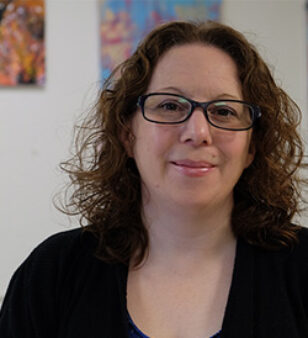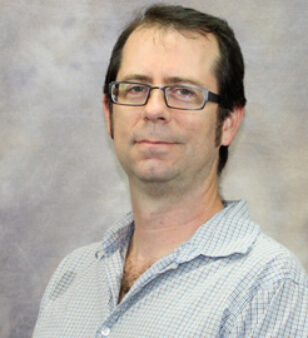Want to Learn More?
At Cedar Crest College, we see you thriving in a vibrant, creative, and supportive community where you can cultivate your talents. Each semester, you will create your works side-by-side with professional faculty artists, visiting artists, and other student artists.
Our program is rooted in the studio tradition and holds a strong emphasis on introducing our students to the history of art, studio techniques, contemporary art issues and applications for their major. You’ll be able to pursue studio practices in painting, sculpture, printmaking, book arts, paper making, ceramics, and community engagement through art.
During your first semesters here, you will be allowed to explore a wide variety of 2D and 3D media. Later, you will select one or two media in which you will focus your final semesters of work. This will enable you to further develop your skills, your artistic voice, and your unique style.
Art Major Concentrations
At Cedar Crest, we offer two concentrations for the Art major to personalize your academic experience to your artistic goals and aspirations.
In the studio art concentration, you’ll explore different artistic media and build a strong portfolio of creative work. In the integrated art concentration, you’ll explore your studio interests and intentionally integrate 12 credits from other disciplines to inform your work.
How To Apply
Ready to apply?

Dive A Little Deeper
Concentrations
Studio Art – designed as a traditional art major focusing on studio and art history
Integrated Art – designed to integrate other disciplines in support of studio and art history courses.

Portfolio Reviews
The Art major requires three portfolio reviews – one in the sophomore year, one in the junior year and one in the Fall of the senior year.
The purpose of the portfolio review is:
- To provide feedback on the progress of your work
- To suggest potential directions the work may take
- To serve as an assessment tool for the art department
- To assist in the creation of a professional portfolio

Art Program Mission Statement
The mission of the Art Major is to provide:
- Students with the tools to engage in processes and techniques that prepare them to visually communicate independent ideas that are informed by historical, cultural and artistic references.
- Curriculum that encourages individual expression and prepares innovative leaders to engage in creative thinking and problem solving based upon the interconnectedness of the liberal arts.
- Art experiences that enhance an understanding of the integrated nature of learning in a liberal arts environment and to provide those who choose the visual arts as a primary focus with the means to reach a high level of experience.
- Arts based resources including exhibitions and student-initiated programs for the enrichment of the artistic culture of the college and local community.

Accreditation
Cedar Crest College is accredited by the Middle States Commission on Higher Education; 1007 North Orange Street, 4th Floor, MB #166, Wilmington, DE 19801
Faculty & Staff
Who’s teaching you is as important as the curriculum you choose.
Let’s put a face to some of the names you’ll be seeing on the course listings!


Casey Burke
Assistant Professor of Art Therapy and Internship Coordinator



Laura Teoli
Dir of the Master in Art Therapy Pr/Asst Prof

- School of Adult and Graduate Education
- sage@cedarcrest.edu
- P: 610-740-3770
- Traditional Admissions
- admissions@cedarcrest.edu
- P: 800-360-1222
- F: 610-740-3780